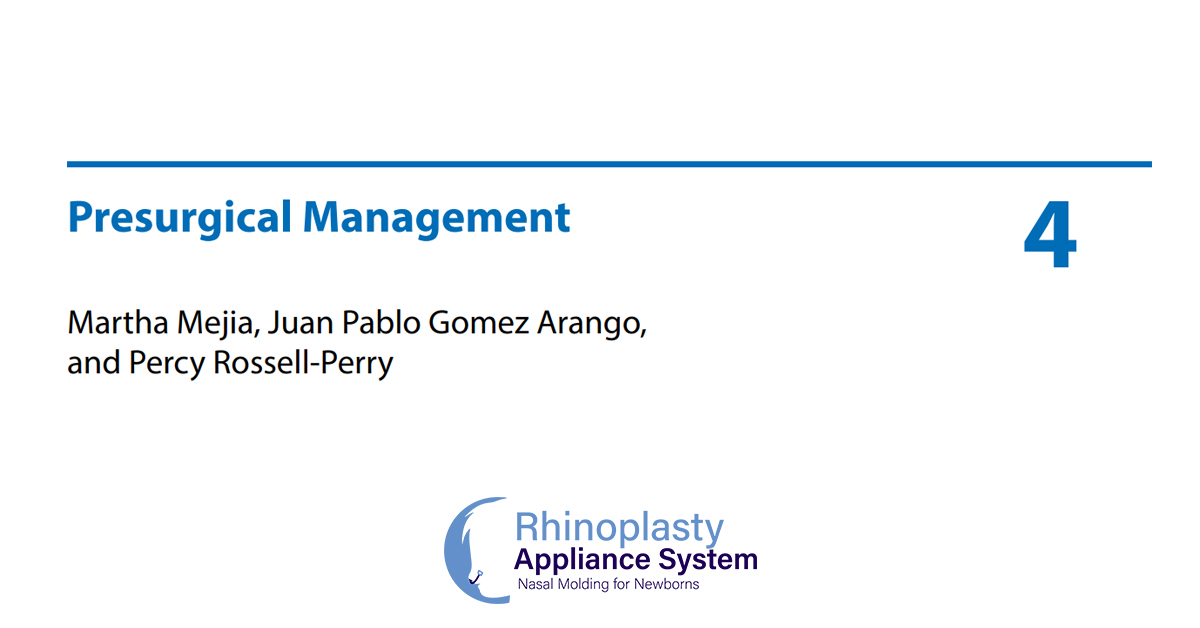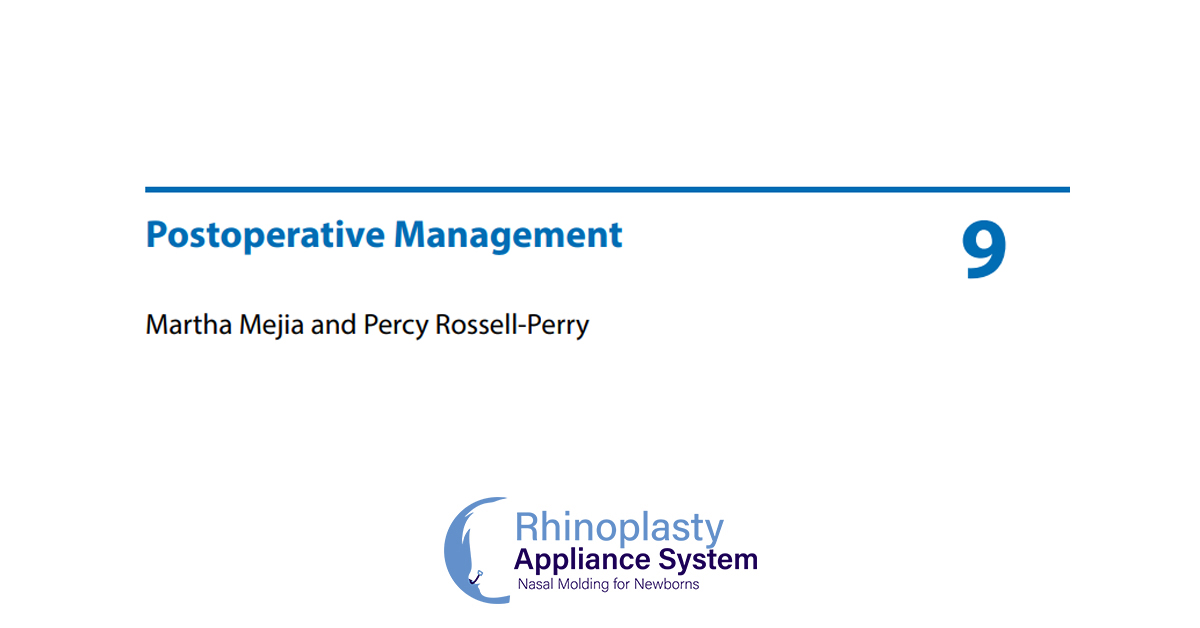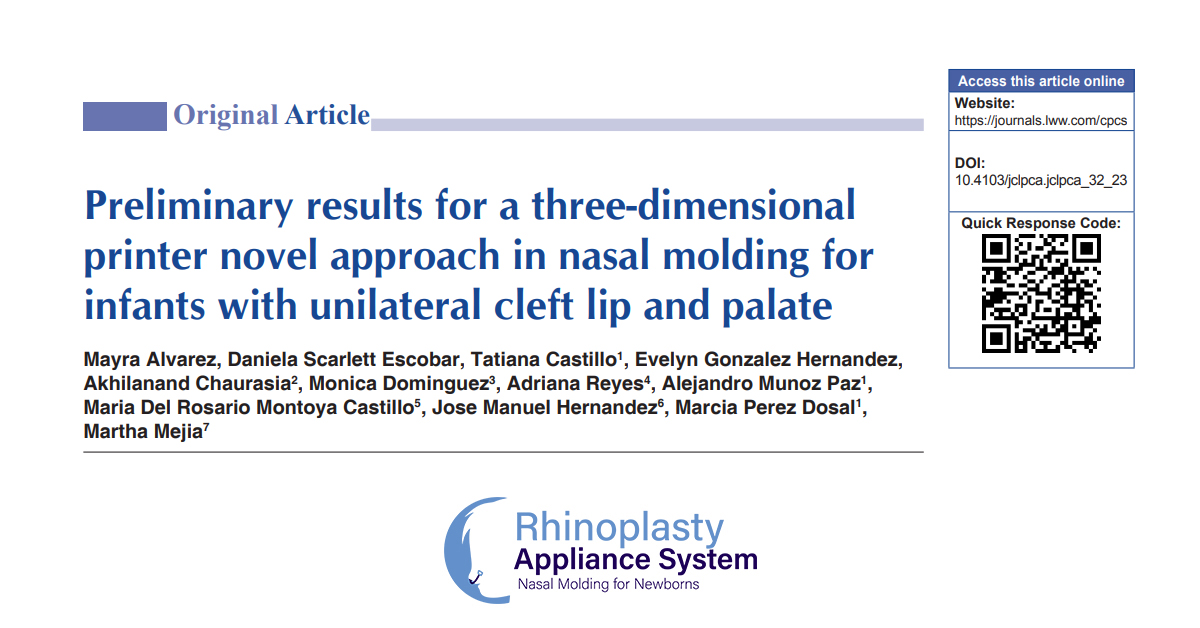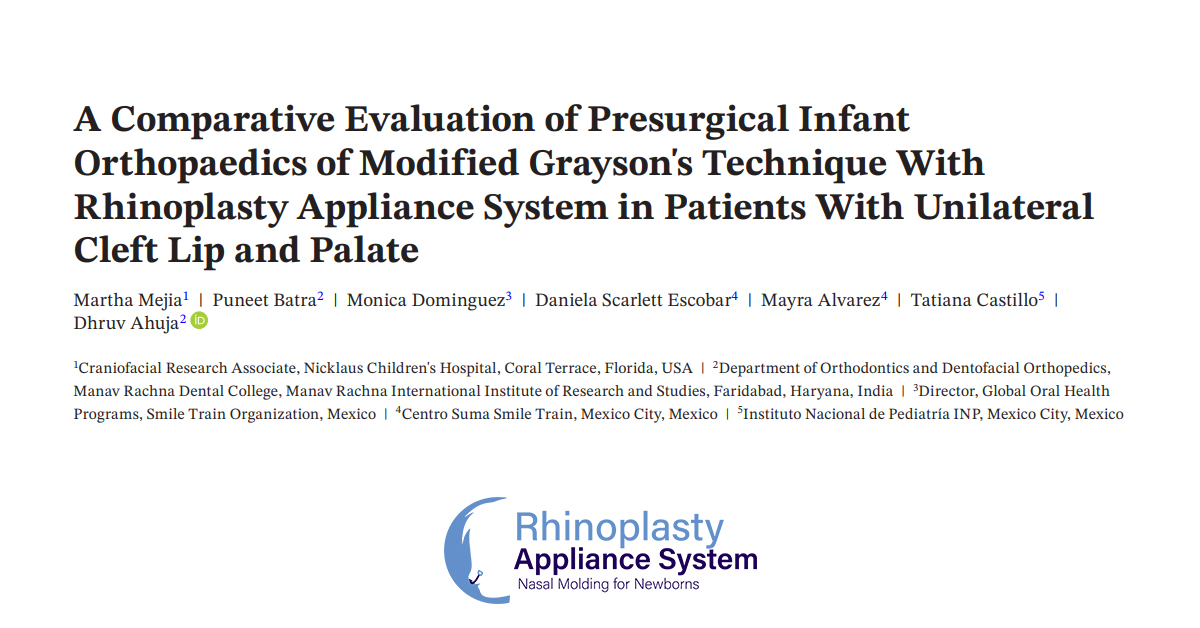Appliance Description
- Home
- Appliance Description
Technique/Device Description Following the principles of presurgical NAM, applied, and re-evaluated continuously for 20 years, we have developed a protocol that separates the management of the nasal and intraoral (palatal) aspects of the anatomic defect caused by the cleft using independent devices for the nose and maxilla. The nasal device, referred to as the RAS, was designed by Martha Mejia in 2003 to correct the patient’s caudal nasal septal deviation, improve the nostril circumference and columellar length, elevate the nasal tip, and approximate the soft and hard tissue borders of the cleft defect.
It specifically and individually addresses the vertical and transverse asymmetries of the nose, displacing the septum and nostrils to a more physiological and esthetic position before surgery and subsequently maintaining the correction of the nasal cartilage, avoiding its collapse after surgery. The device, with its intranasal retention, has greater control to manipulate the nasal septum laterally in an infant with CLP.
The system allows the for the nose to be maintained in a corrected position since the appliance has a lateral component with hooks, drawn by an elastic band taped to the infant’s cheeks.
This is in contrast to the traditional NAM appliance, which straightens the nasal septum with an extension up from the intraoral plate on the affected cleft side. The traditional NAM appliance is difficult for parents and professionals to keep in the correct position and mainly raises the tip of the nose without correcting the deviation of the septum.
Originally, the RAS devices were custom-made; however, now, they are digitally designed and manufactured via CAD/CAM technology and are sequentially applied. The implementation of our system requires a kit of 4 appliances (Figure 1) that are sequentially exchanged during the active phase of treatment. The smallest appliance is initially fitted and activated.
Then it should subsequently be changed every month, increasing the size to modify the nasal structures in preparation for primary lip repair surgery.
The kits are available for right and left unilateral and bilateral CLP. The RAS is composed of the following elements (Figure 2): (1) A nasal prosthesis consisting of intra-nasal extensions (stents) that are inserted into the nostrils, united by a columellar support and 2 lateral arms ending in hooks (2) Two protective pads that avoid direct contact between the adhesive tapes that sustain the elastic elements and the patient’s skin (3) One adhesive labial tape (4) Two adhesive tapes that sustain the elastic elements that provide the orthopedic forces For the intraoral component of the presurgical orthopedic (PSO) intervention.
The nasal devices are based on models of normal anatomy and come in 4 sizes. Each size sequentially molds the nasal tissue over 3 to 4 weeks, allowing elongation of the columella, better projection of the nose, straightening of the nasal septum, and improvement of the shape and size of the nostrils.








